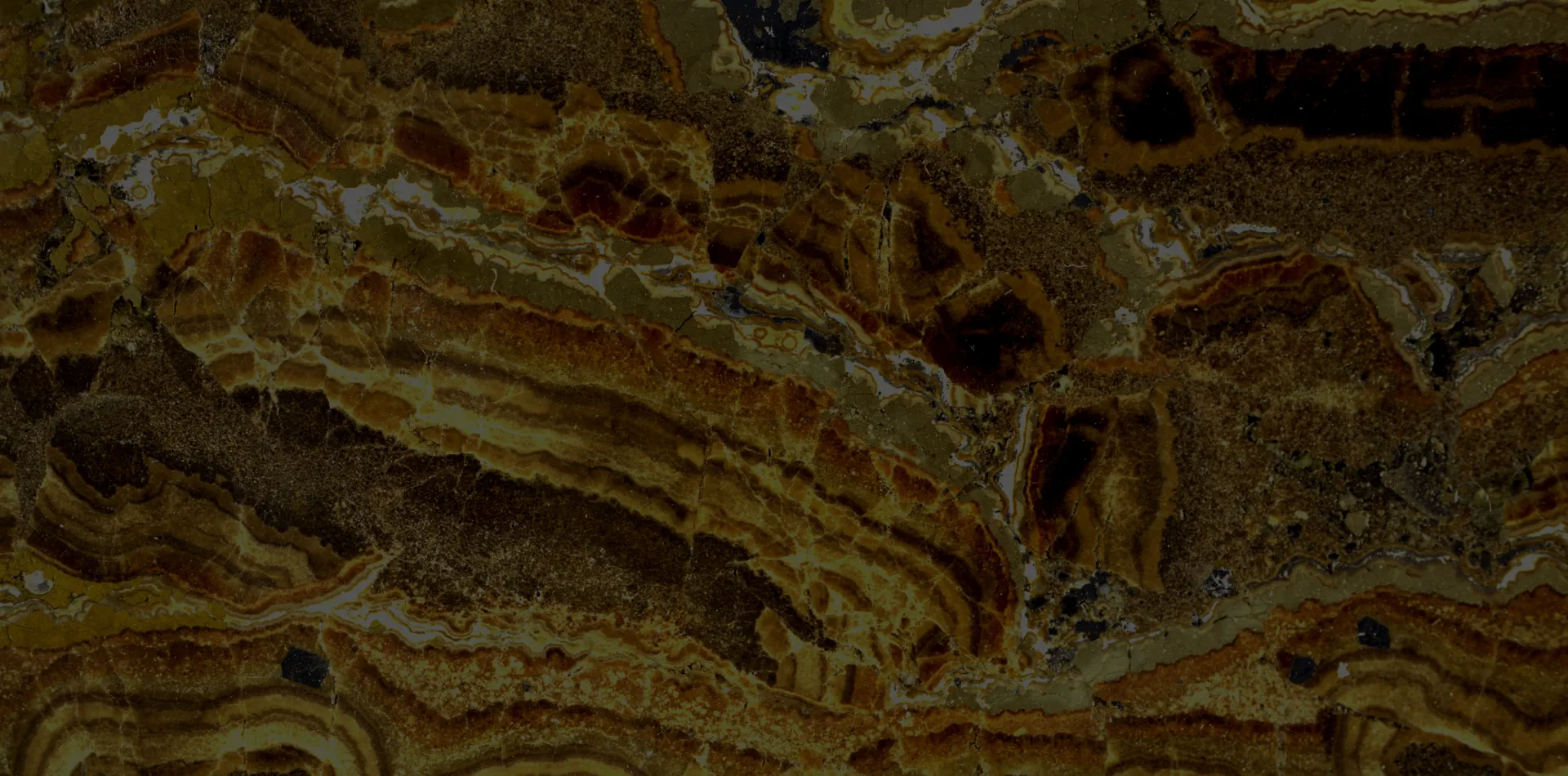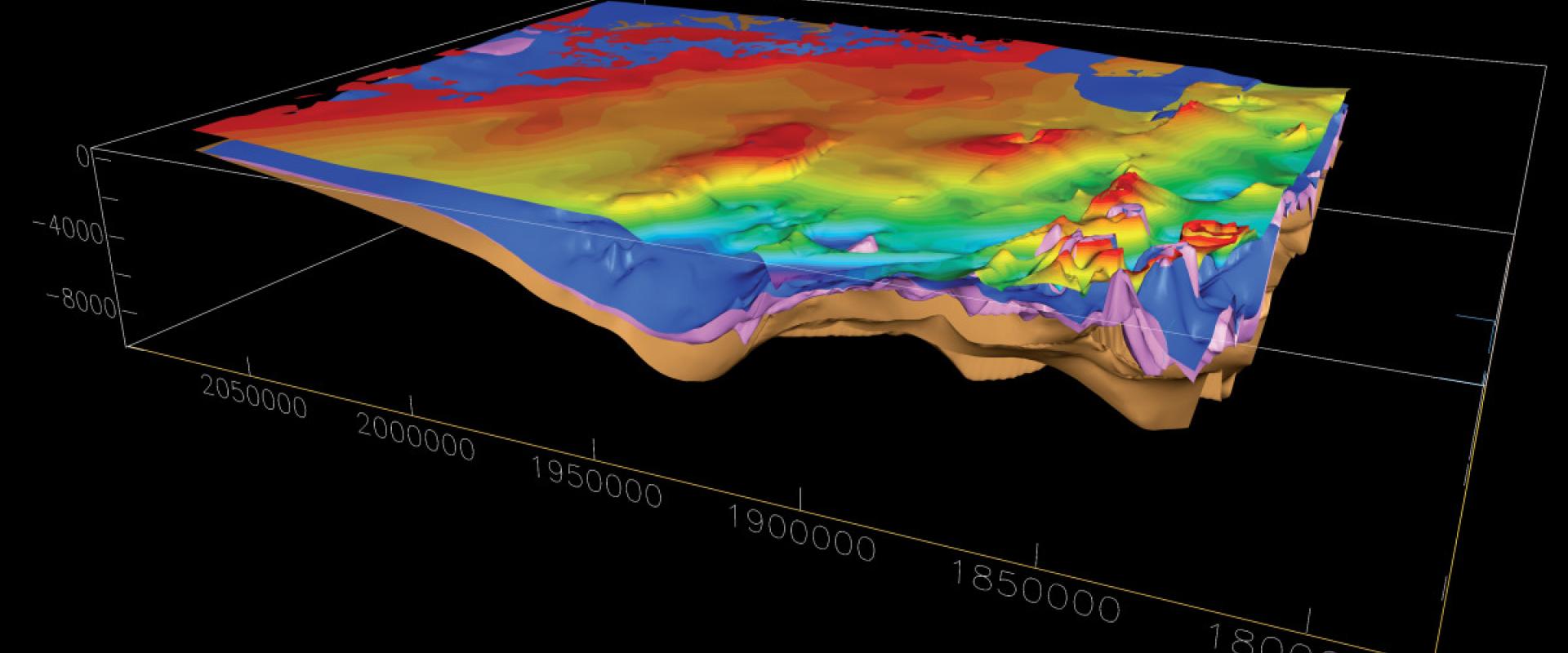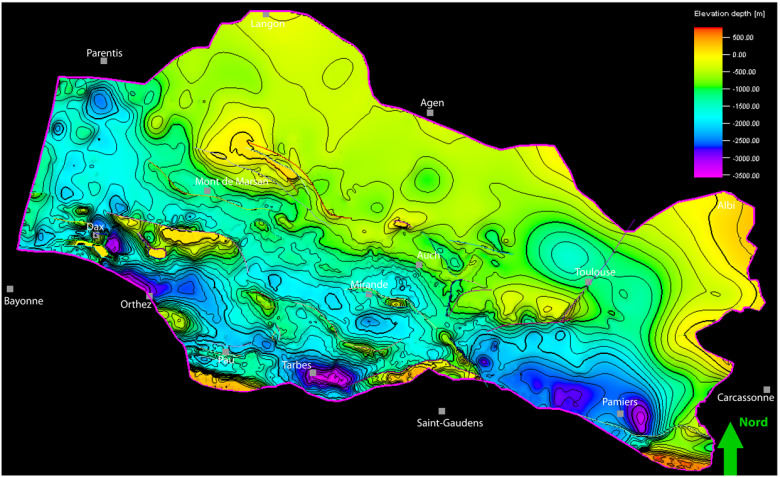Challenges
The Aquitaine Basin was extensively explored for resources in the 20th century and its subsurface exploited, mainly for hydrocarbon resources. In the context of the energy transition, activities are now moving towards the exploration and exploitation of new resources (natural hydrogen, geothermal energy), as well as underground storage (hydrogen, carbon dioxide). This transition is being supported by the public authorities as well as by academic and industrial players, who are carrying out research and development activities.
In particular, the Nouvelle Aquitaine region decided to launch an assessment of its resources in natural hydrogen, which is considered a renewable energy source with promising potential for the energy transition. In addition, the region has potential in terms of geological storage, since it has significant existing infrastructures, local support and strong links between academic and industrial players. Finally, the Aquitaine Basin also has significant geothermal resources.
The AquiBEAT project, which aims to make the Aquitaine Basin a laboratory for the energy transition, addresses the scientific issues linked to conducting exploration operations to find resources (natural hydrogen, geothermal energy), geological storage and the monitoring of gases stored in the subsurface.
Objectives and research areas
The AquiBEAT project of the "Subsurface: a Common Good" PEPR aims to bring together research on these topics in order to improve our geological knowledge of the Aquitaine Basin – in particular for the purposes of low and medium-temperature geothermal applications. It also aims to produce a guide for the exploration of natural hydrogen resources and to study problems linked to underground storage.
It therefore focuses on three areas of research:
1. Developing integrated knowledge of the reservoir potential
This research area involves a number of operations aimed at improving knowledge of the geometry and characteristics of the subsurface in the Aquitaine Basin, which can then be used as the basis for various applications (geothermal energy, storage, new energies, etc.).
Deterministic geological modelling of the Meso-Cenozoic series of the Aquitaine Basin.
This operation aims to achieve three main objectives:
- Implement the existing dataset (geological maps, boreholes, seismic profiles reprocessed by BRGM);
- Harmonise the mapping of the main geological features of the basin;
- Create a geological model of all the Meso-Cenozoic formations of the basin. The emphasis is placed on ensuring the coherent integration of existing data, the standardisation of time-scale mapping and the creation of a large-scale overall geological model for the geological formations of this specific period.
Geological models and reservoir capacities of the Mesozoic formations of the Aquitaine basin: geothermal energy applications. The aim of these operations is to improve the geological model of the Cretaceous period in the north of the Aquitaine Basin, focusing on the potential future use of deep aquifers for geothermal energy. At the same time, this study looks at the reservoir capacity of the Jurassic formations in the basin, and seeks to understand the episodes of dolomitisation linked to the underground movement of fluids and their associated circulation on a regional level. The overall objective is to optimise geological knowledge of the area with a view to developing more efficient use of geothermal resources on a regional scale.
2. Exploring the frontiers of new energy resources
This research is devoted to exploring new energy resources, in particular hydrogen. It is organised into three distinct areas of action:
Passive Hydrogen Monitoring (PHyM): this approach combines passive seismic monitoring and innovative geochemical sensors to study the presence of hydrogen (H2) on the Bénou plateau and in the Rébénacq region of the Ossau Valley. This integrated approach will provide an overall understanding of the situation, combining geophysical and geochemical data to assess the distribution of hydrogen in the region, with potential implications for scientific research and environmental monitoring.
Exploration for hydrogen along the fault system in the foothills of the Comminges basin: this reconnaissance phase will be carried out using a multi-method survey. The approach combines geochemistry, geophysics, mineralogy and microbiology to develop a hydrogen (H2) exploration guide, for the Comminges basin. This comprehensive methodology opens up perspectives involving various scientific disciplines and aims to provide comprehensive and reliable data to guide hydrogen exploration efforts in the Comminges basin area.
The role played by the Palaeozoic period in the H2 system of the Pyrenees: this study will attempt to deepen our understanding of the geodynamic history of the Palaeozoic formations in the Pyrenees. It aims to test hypotheses regarding the P-T-t (Pressure, Temperature, Time) pathways concerning the burial and maturation of organic matter, as well as the potential for the generation and migration of hydrogen (H2) in the overlying formations. The methodology incorporates geodynamic simulations to understand the role of the Palaeozoic period and the conditions conducive to the generation and migration of hydrogen.

Modélisation 3D surfacique du Bassin aquitain, de l'avant-pays nord pyrénéen à l'embouchure de la Gironde (Gironde).
© BRGM - Olivier Serrano
3. Key questions concerning the monitoring and safe geological storage of hydrogen
This research aims to improve our understanding and management of the processes and interactions between hydrogen (potentially combined with CO2) and the geological environment in which it may be stored. Three topics are addressed:
REDox processes in saline hydrothermal systems: This research uses an innovative methodology for characterising the redox state and dynamics of hot, saline hydrothermal systems. The focus is placed on the application of the methodology in experiments involving the production of hydrogen by serpentinisation mechanisms.
Hydrogen storage and migration in clays: The study aims to quantify the underground storage capacity of reservoirs containing clays and to find ways to specifically identify the nature of the natural hydrogen resource (type of accumulation and/or type of continuous flow/production).
The bio-geochemical conditions that are conducive to the underground storage of hydrogen and CO2: this study is based on a methodology designed to understand how bio-geochemical conditions can influence the gases stored underground (H2, CO2 or a combination of the two): methanation, associated gas, etc. This integrated approach explores the complex interactions between bio-geochemical conditions and underground gas storage, thus paving the way for significant advances in the understanding and optimisation of these processes.
Co-managers of the project
Jean-Paul Callot, University Professor at UPPA, Project Coordinator
Jean-Paul Callot holds a PhD in geodynamics from the École Normale Supérieure in Paris. Working as a research engineer and project manager at IFP from 2003 to 2011, he specialised in basin modelling and dynamics, analogue modelling and damage analysis. He has been a Professor at UPPA (University of Pau and the Pays de l'Adour) since 2011, where he was responsible for the TOTAL-UPPA chair in structural geology (2011-2021), and developed expertise in salt tectonics and diagenesis. During his time at UPPA, he has been Head of the Geosciences team, Chairman of the Research Council and a member of the E2S steering committee. He is currently Director of the Complex Fluids and Reservoirs Laboratory (UMR 5150). He has coordinated or co-coordinated 37 collaborative research projects, and has supervised or co-supervised 19 PhD students and 18 post-doctoral students, resulting in 108 publications.
Olivier Serrano, Manager of the Sedimentary Basins Unit in BRGM's Georesources Department, Co-Manager of the project
Olivier Serrano is a sedimentologist. After studying at the University of Pau and then the University of Toulouse, he joined the sedimentology team of the Géosciences Rennes laboratory in 1996. He worked with Gaz de France (GDF) on gas storage in the Paris Basin before starting his thesis work on the Upper Cretaceous/Paleogene formations of the Aquitaine Basin, again in partnership with GDF. He defended his PhD on 11 April 2001. He then further developed his expertise at the University of Colorado in Boulder, working in the EMARC (Energy and Minerals Applied Research Center) laboratory. His work on the offshore basins in the Gulf of Mexico consolidated his expertise in the seismic and geodynamic interpretation of sedimentary basins. In June 2002, he joined BRGM where he carried out studies on basins in France and abroad (Africa), addressing applied research topics such as water, risks, geothermal energy, gas and CO2 storage. Since 2010, he has been the Manager of BRGM's Sedimentary Basins Unit.
Partners
- Université de Pau et des Pays de l’Adour - UPPA (établissement coordinateur)
- Université Grenoble Alpes
- Université de Lorraine
- Université Paris Saclay
- Université de Bordeaux 1
- Université d’Orléans
- BRGM




